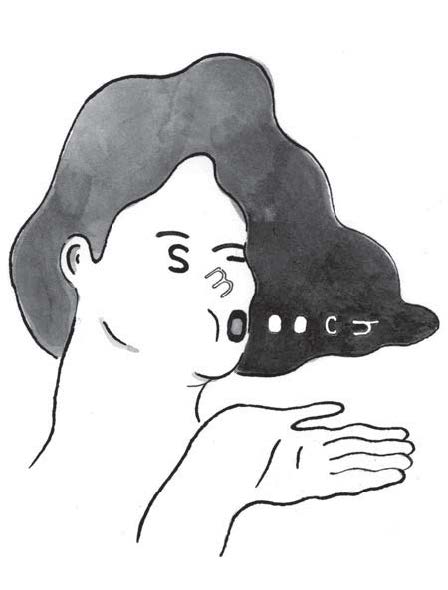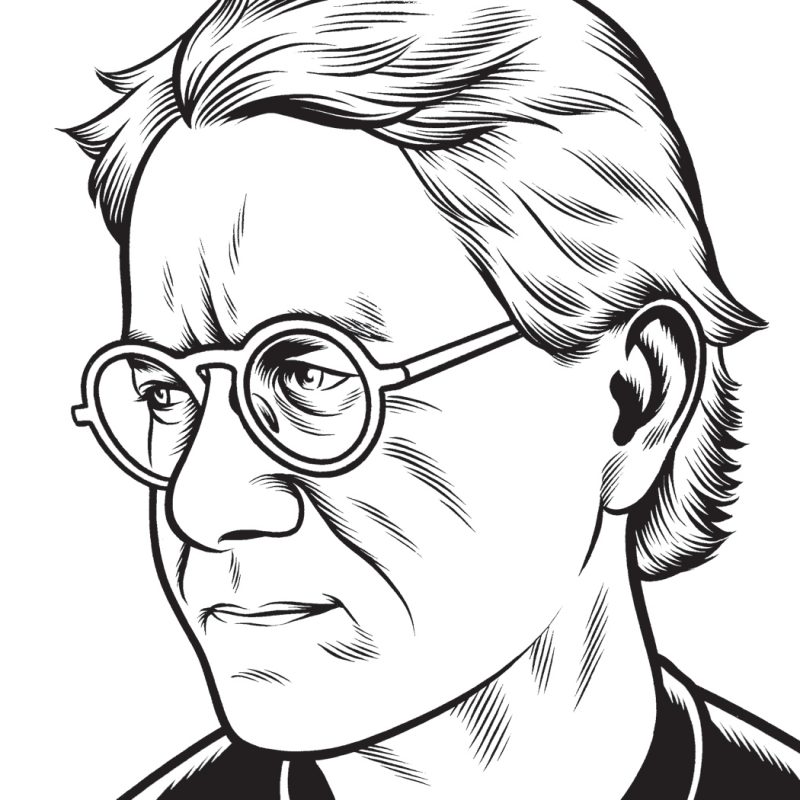
(1) Pearl Jam and Sleater-Kinney, “Rockin’ in the Free World,” Tampa, Florida, 2003 (YouTube). This is no all-star jam. This is rock ’n’ roll celebrating the human spirit, a good song, and itself. It’s two bands touring together, but now one band, six men, three women, Janet Weiss hammering stand-up percussion next to Jack Irons’s drums, Carrie Brownstein facing off with Stone Gossard, Mike McCready soloing joyously while Corin Tucker and Eddie Vedder throw verses back and forth as if each is the other’s all-time teen dream and they’re going to make this senior prom last forever, even if the Neil Young number they’re dancing to is really Carrie’s bucket of blood.
(2) Stanley Crouch, Kansas City Lightning: The Rise and Times of Charlie Parker (HarperCollins). There’s a moment in this stirring book when Crouch, homing in on the first Joe Louis–Max Schmeling fight, in 1936, links the three minutes of a prizefight round to the three minutes of one side of “a 78-rpm record, all a jazz band needed to make a complete musical statement.” It’s part of a plain and poetic argument about the effect of recording technology on both fighting and jazz. It’s part of a rewriting of the legacy of Jack Johnson, the first black heavyweight champion, and of how he “almost instigated an interior ethnic riot” when “he chose to go through Harlem bragging about how much money he’d won by betting on the German.” Page by page, the book is unpredictable before it’s anything else. It ends in 1940, with Parker taking his first steps in New York, still a teenager, but the sense of an odyssey completed, the wind of history at one man’s back as he begins to blow it out ahead of himself, is overwhelming.
(3) Rosanne Cash, The River and the Thread (Blue Note). A soul-music travelogue, taking in Memphis, Faulkner, Dockery Farms, the Civil War, Robert Johnson’s gravesite, Bobbie Gentry’s Tallahatchie Bridge, and Money, Mississippi, the town where Emmett Till was lynched and thrown into the river that runs under the bridge. You don’t have to hear any of that; the words don’t point to places on a map. What you hear is time passing.
(4) Rachel Harrison, Fake Titel (D.A.P.) An elegant catalogue for an exhibition (beginning in Hanover in 2013 and ending at the Museum of Contemporary Art in Gent this January 5) most notable for a series of unflinchingly rough 2011-12 colored-pencil portraits of Amy Winehouse—Winehouse as a Picasso model, or maybeuse. As Winehouse is juxtaposed with Picasso’s harlequins, his Gertrude Stein or his Cubist nudes; as she seems to be using her hand-held mike as a spray can to conjure Guernica out of the air, her own features crack and bend, one eye sliding below the other, her skin bruising in greens and purples. With her beehive seemingly bigger with each picture, her mouth bigger, she begins to resemble a rotting inflatable sex doll—or a junkie decomposing before she’s even dead. Yet you are never free of Winehouse’s presence, power, desperation, defiance, or need. The tension between her self-presentation as a cartoon and the tragedies enacted in her music is patent here—and finally, with Winehouse sharing an image with dancing muses or Marie-Thérèse Walter, you can see her not as some sort of Doppelgänger for Picasso’s women, models from life or specters from history, but as their voice.
(5) Body/Head, Coming Apart (Matador). From singer Kim Gordon, late of Sonic Youth, and guitarist Bill Nace, this is a fierce, sustained funhouse ride with the lights off. Over long stretches, sheets of noise fuse like concrete and then, as a rhythm builds or a melody opens before it disappears, they begin to crack. The music is all undertow. With the folk song “Black Is the Color” emerging at the end of more than thirteen minutes of “Black,” you’re somewhere in one of the Doors’ half-improvised onstage versions of “The End” and Gordon’s own harrowing “Shaking Hell,” from Sonic Youth’s first album, Confusion Is Sex. And not ready to leave.
(6) The Clash, Sound System (Sony). A boxed-set packaged as a facsimile of the boom boxes people used to carry on their shoulders in the eighties, the monster contains the first five Clash albums, obscurities and rarities and B-sides, fanzines and posters and buttons, film clips and outtakes, early sessions and DVD footage of interviews and performances and videos. But not “This Is England,” from Cut the Crap, the last Clash album, in 1985, because that album, made after Joe Strummer and Paul Simonon kicked Mick Jones and Topper Headon out of the band, isn’t supposed to exist, even if “This Is England” is the band’s ethos, its mission, its triumph, and a confession of its failure: its “Streets of Laredo,” its “I’m shot in the breast and I know I must die.”
(7) Libertines, “Don’t Look Back Into the Sun” (2006), as crawl music for Kill Your Darlings, directed by John Krokidas (Killer Films). Running under the credits—and finally, a feeling of release. Release from the claustrophobia of the tiny little world created by Daniel Radcliffe’s Allen Ginsberg, Dane DeHaan’s Lucien Carr, Michael C. Hall’s David Kammerer (a weird cross between his Dexter and his Six Feet Under character David Fisher), Jack Houston’s Jack Kerouac, and most quietly and most deeply, as if playing out his own, almost silent film within a film, Ben Foster’s William Burroughs.
(8) Neko Case, The Worse Things Get, The Harder I Fight, The Harder I Fight, The More I Love You (Anti-). With Case’s cool, clear tone—never a burr, a break, a hesitation—fucking as an adjective at first seems out of place. Until it comes up again, and you hear it as Case, on her solo albums so often swaddled in overwriting and decorative arrangements, singing in her own voice: her own tired, fed-up voice, the voice of someone who refuses to quit.
(9) Jay-Z, Picasso Baby: A Performance Art Film, directed by Mark Romanek (HBO/YouTube). Not counting exit footage and credits, this six-minute movie, made from a six-hour performance at the Pace Gallery in New York, and most notable for Jay-Z’s dances with groupie-for-a-day Marina Abramovic—not to mention an eclectic crowd of painters, gallery owners, impresarios, actors, schoolchildren, and film directors, all clearly having a great time—answered the question of what hip-hop, celebrity, and contemporary art have in common: they’re forms of money. You get the feeling all of the people here could walk out of the gallery and into any other place and buy whatever they want with the currency of their mere existence.
(10) Lou Reed, “Street Hassle” (1978), processional at a wedding in Beacon, New York (October 12, 2013). The cellos and violas never sounded more glamorous, more of a portent, but the setting didn’t immediately match the music: Could this actually be what it sounded like? Were they really going to walk down the aisle to that? A DJ faded down the song before the second verse, where a woman OD’s and the rest of the people at the party throw her body out the door, after which Reed delivers a soliloquy for which he ought to be remembered as much as for anything else: “You know, some people got no choice, and they can never find a voice, to talk with that they can even call their own. So the first thing that they see that allows them the right to be, why, they follow it. You know, it’s called—bad luck.” RIP, 1942-2013.





